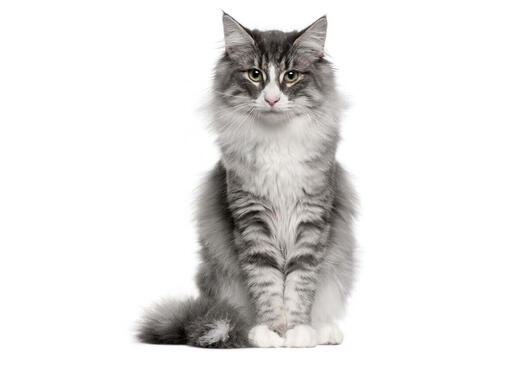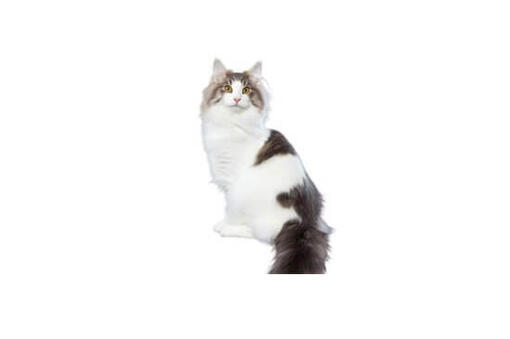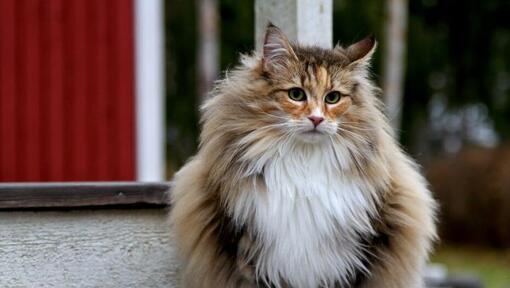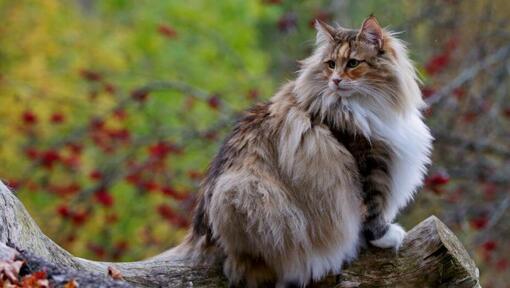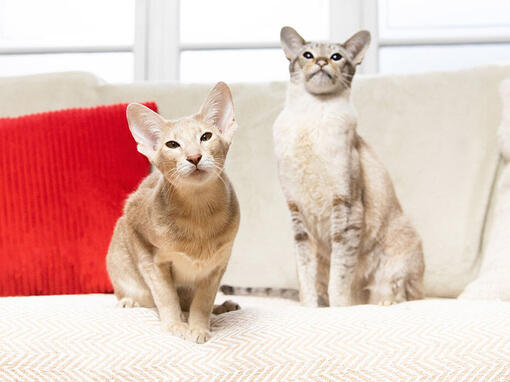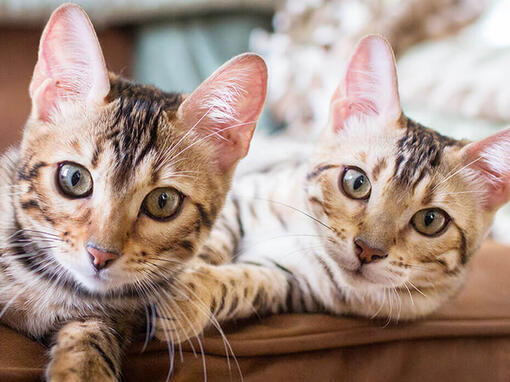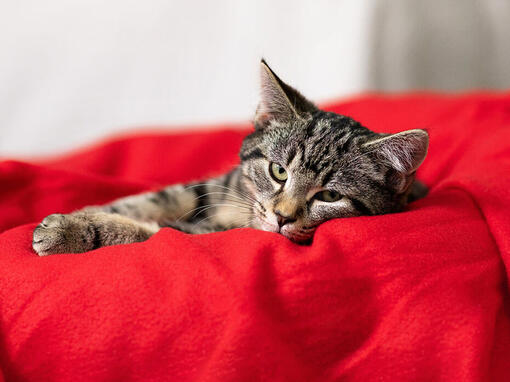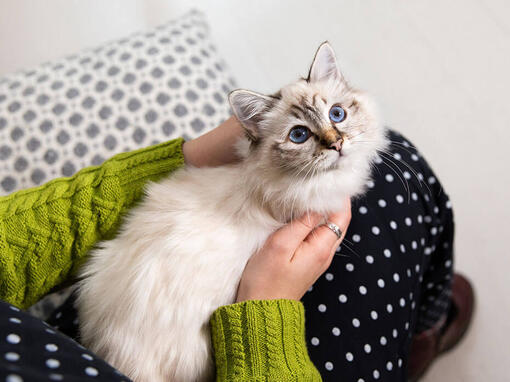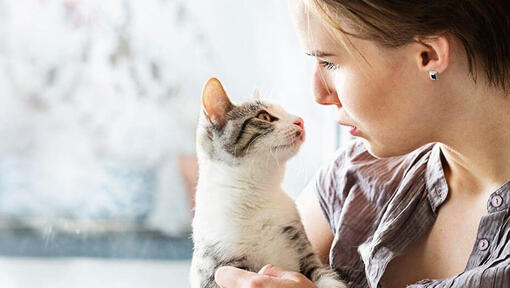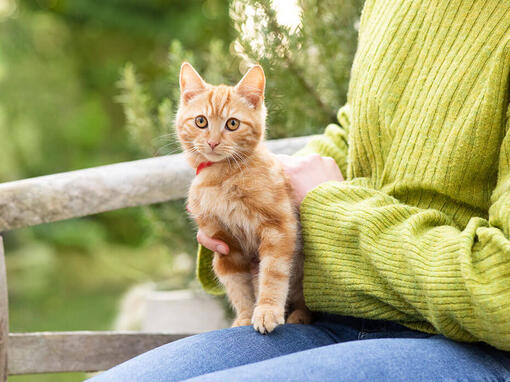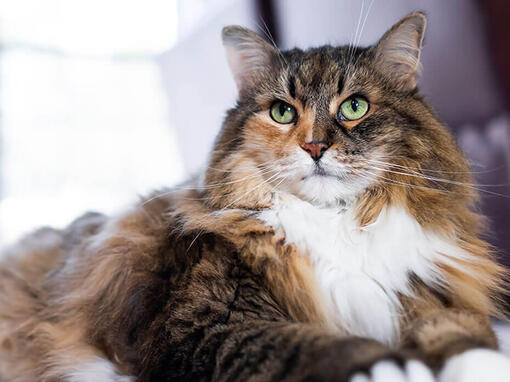- Highly active and inquisitive cat
- Sociable and dependent cat
- Somehow talkative cat
- Larger stockier cat breed
- Requires grooming every day
- Outdoor cat
- Great family cat
Pet Card
- Living Considerations: Good for multi-pet households, not hypoallergenic
- Size: Large, with males weighing 4.5 to 7 kilograms and females weighing 3.5 to 5.5 kilograms
- Coat: Long, dense, glossy, smooth
- Temperament: Sweet, curious, intelligent
- Grooming: Weekly
- Shedding: Yes
- Vocalisation: Moderate
Personality
Norwegian Forest cats love people and thrive on human company. At times they can be very demanding of affection. At other times they appear quite independent. They are used to an outdoor life and are well adapted to roam and hunt outside and are said to be excellent climbers. They can be very rewarding companions as they are extremely friendly and playful. The breed is slow in developing and may not be mature until four years of age.
History and Origins
Country of Origin: Scandinavia
The Norwegian Forest cat is a breed believed to originate from the shorthair cats brought by the Vikings from Great Britain and longhair cats brought by the Crusaders to Scandinavia, which then mated with local farm and feral cats. The breed's origin in the cold north of Scandinavia has meant that it is well adapted to the cold winters and is rugged and hardy. The best adaptation to the climate is the double coat, which keeps out the wind and the snow and is quick drying. The breed was first recognised in Norway in 1930 and first appeared at cat shows in 1938. Norwegian Forest cats were only exported from Norway in the 1970s.
The Norwegian Forest cat seems to be a robust breed with no major inherited problems documented.
Every cat is unique and each has their own particular likes, dislikes, and needs when it comes to food. However, cats are carnivores and every cat must obtain 41 different and specific nutrients from their food. The proportion of these nutrients will vary depending on age, lifestyle and overall health, so it's not surprising that a growing, energetic kitten needs a different balance of nutrients in her diet than a less active senior cat. Other considerations to bear in mind are feeding the right quantity of food to maintain 'ideal body condition' in accordance with feeding guidelines and catering to individual preference regarding wet or dry food recipes.
The Norwegian Forest cat will need additional grooming. If introduced to a brush and comb as a kitten the cat will come to enjoy regular grooming as part of the relationship between cat and owner.
While this breed is not widely recognised as one of the best breeds for children, all cats are different and with the proper familiarisation may still be able to live with children.
